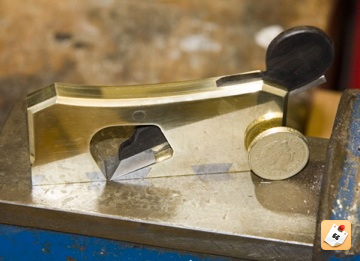RWoody
Established Member
After a little delay, and kindly been directed to the metalworking section by Charley (I hadn't noticed there was one, to be honest  ) I'm now putting out a request for some expertise on the subject of milling using a router. I have already discussed this a little on the woodworking part of this site (with some helpful comments I must say) but being a very cautious guy, I'd like to put it out to a wider audience too:
) I'm now putting out a request for some expertise on the subject of milling using a router. I have already discussed this a little on the woodworking part of this site (with some helpful comments I must say) but being a very cautious guy, I'd like to put it out to a wider audience too:
Has, or have, any of you used a router to mill metal with? I'm talking brass in my case. The concerns I have are ones of head rotation speed, as a usual metalworking lathe operates at low rpms in the region of 600, for example, whereas a router, designed primarily for wood, spins at many, many times that, often around the 20,000 rpm mark. While I doubt the router wouldn't cut metal, my main concern is heat. Surely, even if using cutting lubrication (and much would 'spray' off too at these high router bit speeds) things will heat up rapidly, and take off the router bit's temper?
Secondly, because of the fast speed a router has, would not the cutting surfaces become dull quickly too? I mean one isn't going to be able to sharpen a TCT cutter themselves anyway (though correct me if I'm wrong) as they aren't 'soft' like HSS, which can be sharpened, but I'm sure would become dull VERY quickly if milling metal!?
So is there anyone who has first hand experience with this, who'd be able to give a bit of sound advice, please? Thanks in advance. :0)
Has, or have, any of you used a router to mill metal with? I'm talking brass in my case. The concerns I have are ones of head rotation speed, as a usual metalworking lathe operates at low rpms in the region of 600, for example, whereas a router, designed primarily for wood, spins at many, many times that, often around the 20,000 rpm mark. While I doubt the router wouldn't cut metal, my main concern is heat. Surely, even if using cutting lubrication (and much would 'spray' off too at these high router bit speeds) things will heat up rapidly, and take off the router bit's temper?
Secondly, because of the fast speed a router has, would not the cutting surfaces become dull quickly too? I mean one isn't going to be able to sharpen a TCT cutter themselves anyway (though correct me if I'm wrong) as they aren't 'soft' like HSS, which can be sharpened, but I'm sure would become dull VERY quickly if milling metal!?
So is there anyone who has first hand experience with this, who'd be able to give a bit of sound advice, please? Thanks in advance. :0)


































